Platteville's Mining Legacy
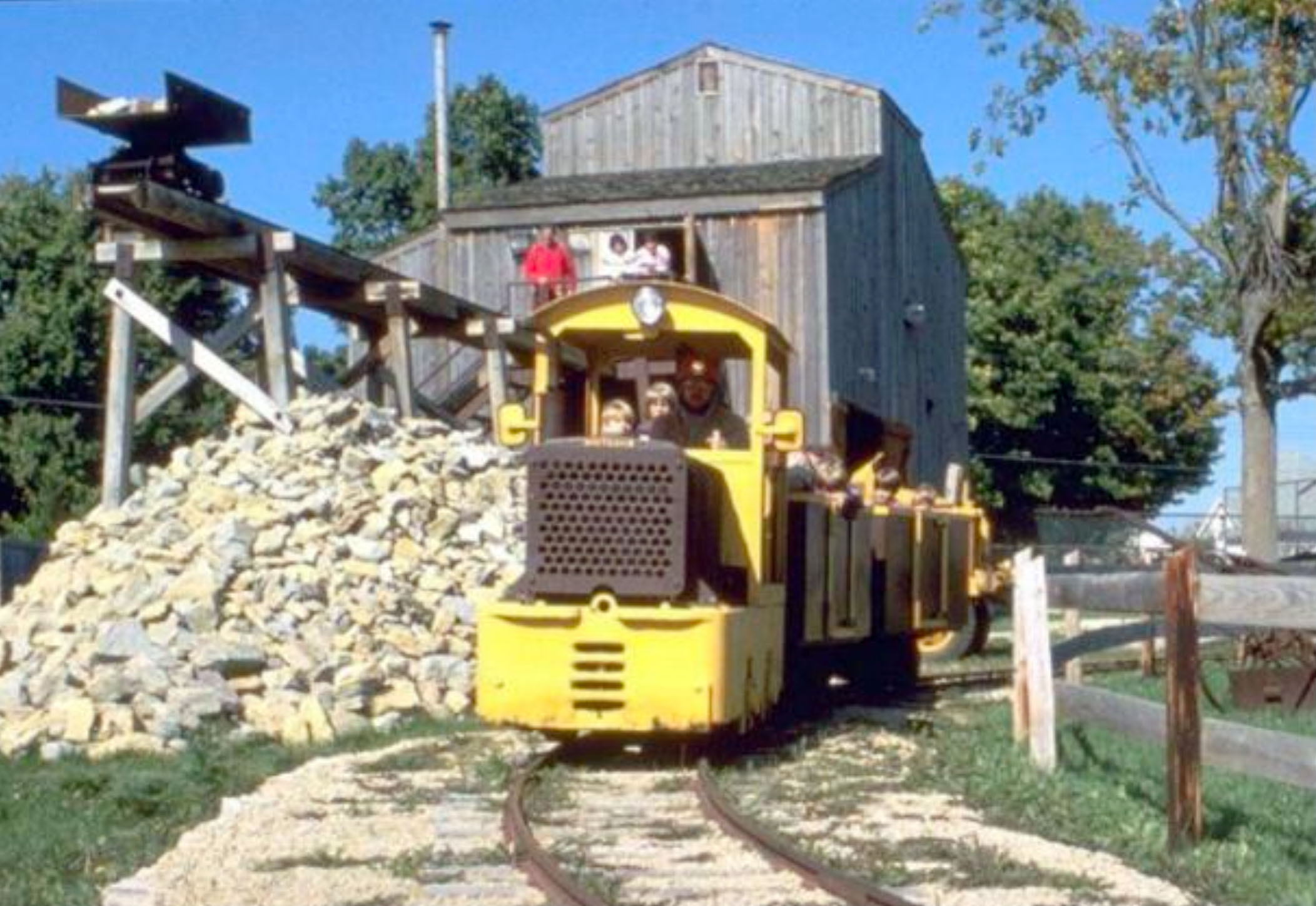
The remodeled train takes visitors on a tour of the museum grounds, including the “hoist house”. Source: The Mining and Rollo Jamison Museums. |
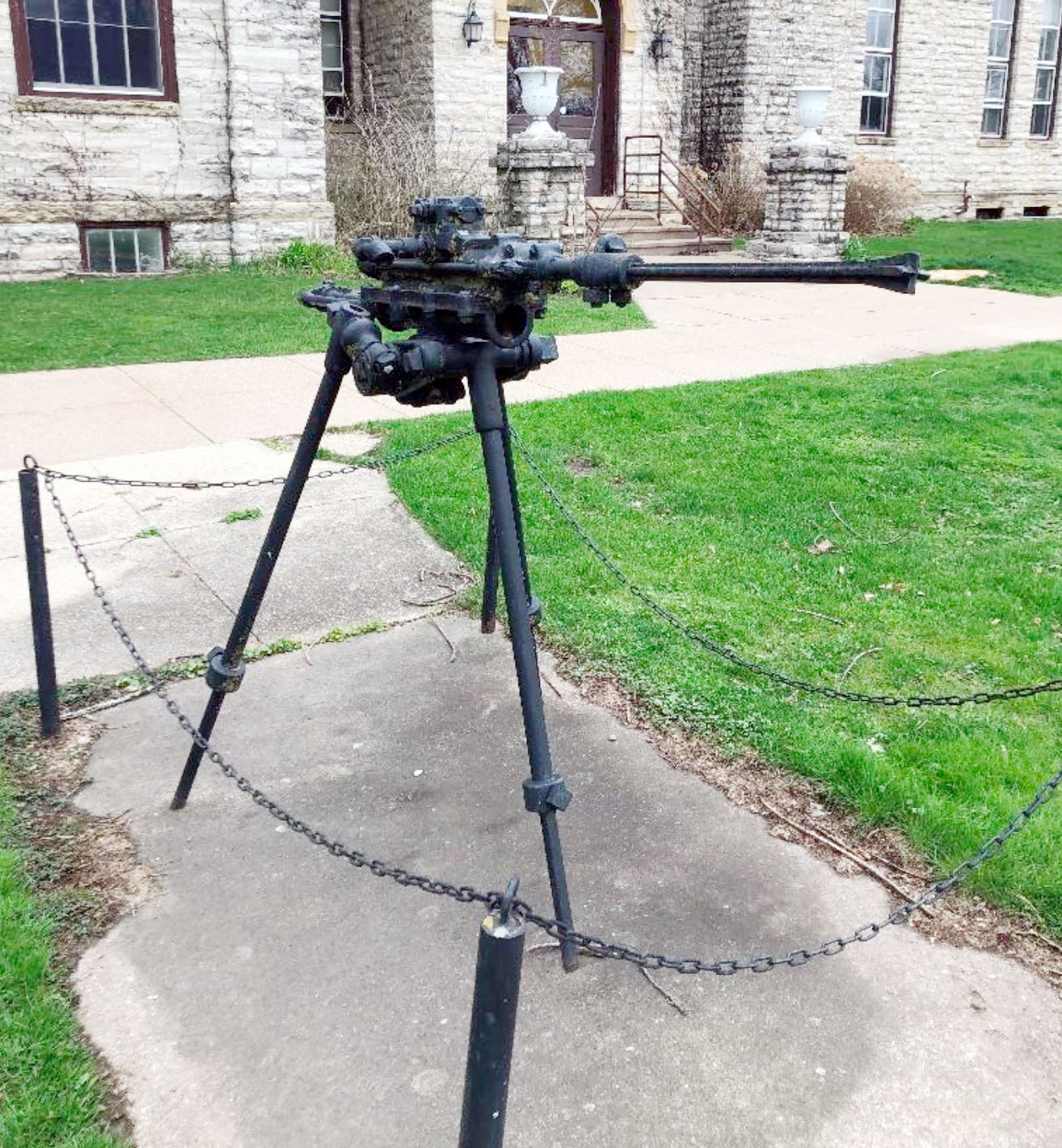
The Ingersoll-Sergeant pneumatic rock drill in Platteville, Wisconsin. Owner of image: Liam Reinicke. |

A lead miner who immigrated to Platteville from Bulgaria uses a pneumatic rock drill in a zinc mine in the early 1900s. Source: The Mining and Rollo Jamison Museums. |
Ingersoll-Sergeant Rock Drill
Just standing a few blocks east from the Mining Museum is the Ingersoll- Sergeant pneumatic rock drill. This drill symbolizes mining’s impact in Platteville. The Ingersoll-Sergeant Rock Drill Co. manufactured the drill, and miners used it in the Platteville zinc mines. As improvements in drilling technology were made, more advanced models replaced this drill. In the mid-1950s, the drill was placed on display in front of the Wisconsin Institute of Technology, which later became known as the University of Wisconsin-Platteville. Today, the building is the Rountree Hall Apartments. |
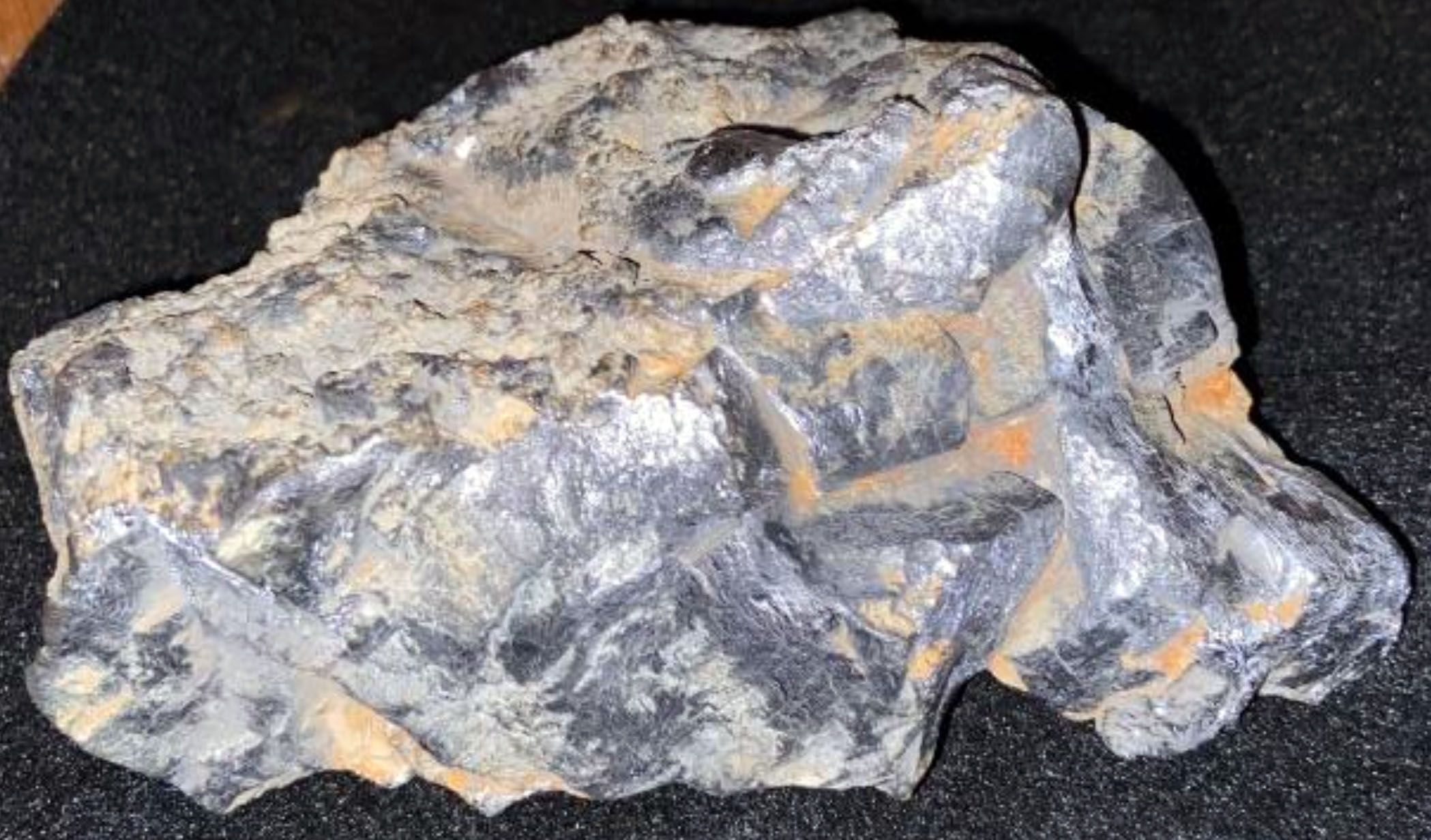
Galena is the mineral form of lead sulfide (PbS) and was the main mineral mined during the lead boom in Platteville from 1827 to 1849. Source: Original picture by Liam Reinicke taken at the Mining Museum in Platteville. |
Platteville’s Lead Boom
In 1827, frontiersmen exploring the Northwest Territory discovered galena (lead ore) in Platteville. This sparked a lead rush to the area. Many of these early miners hailed from Cornwall, England and the Southern United States. John Rountree, a Southern businessman, moved to Platteville to enter the lead industry. He is credited with officially founding Platteville in 1829 and is the namesake for the historic Rountree Hall where the Ingersoll-Sergeant drill is on display. While Rountree was a successful businessman and philanthropist, his legacy is complicated by the fact that he owned slaves in Platteville. |
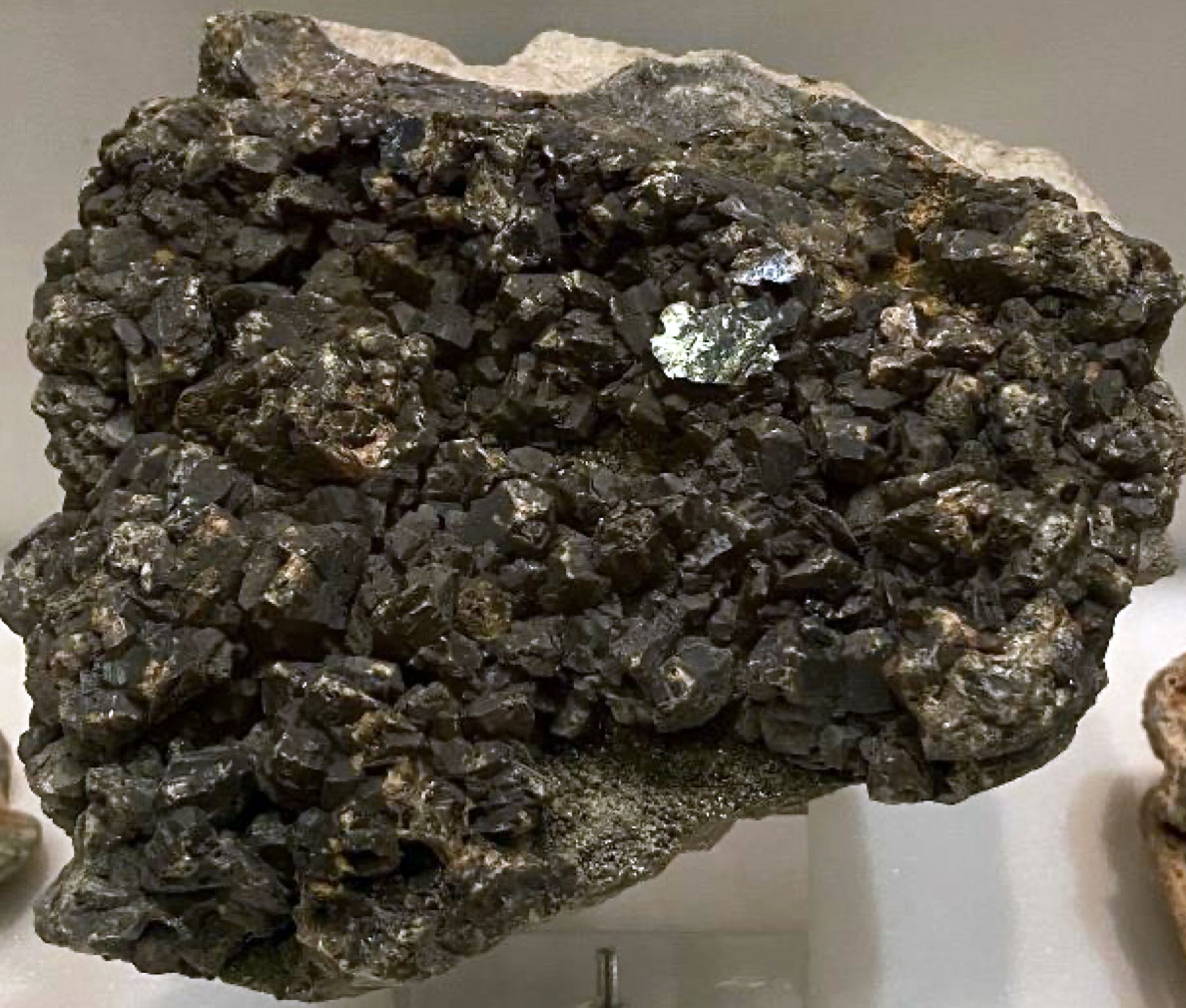
Sphalerite, known as Zinc Sulfide (ZnS), was the main mineral mined in Platteville from the 1860s to the end of mining operations in 1979. Source: Original picture by Liam Reinicke taken at the Mining Museum in Platteville. |
Platteville’s Zinc Boom
By 1850, lead began to run out in Platteville. However, advances in mineral processing and water pumping technologies sparked Platteville’s zinc boom. The zinc ores of smithsonite and sphalerite were abundant in Platteville. Sphalerite became the most important mineral mined and was the main cause of the zinc boom in the early 1900s. More than 31 joint-stock mining companies were incorporated in Platteville alone in 1905 and 1906. The final zinc mine in Platteville ended operations in 1979. |
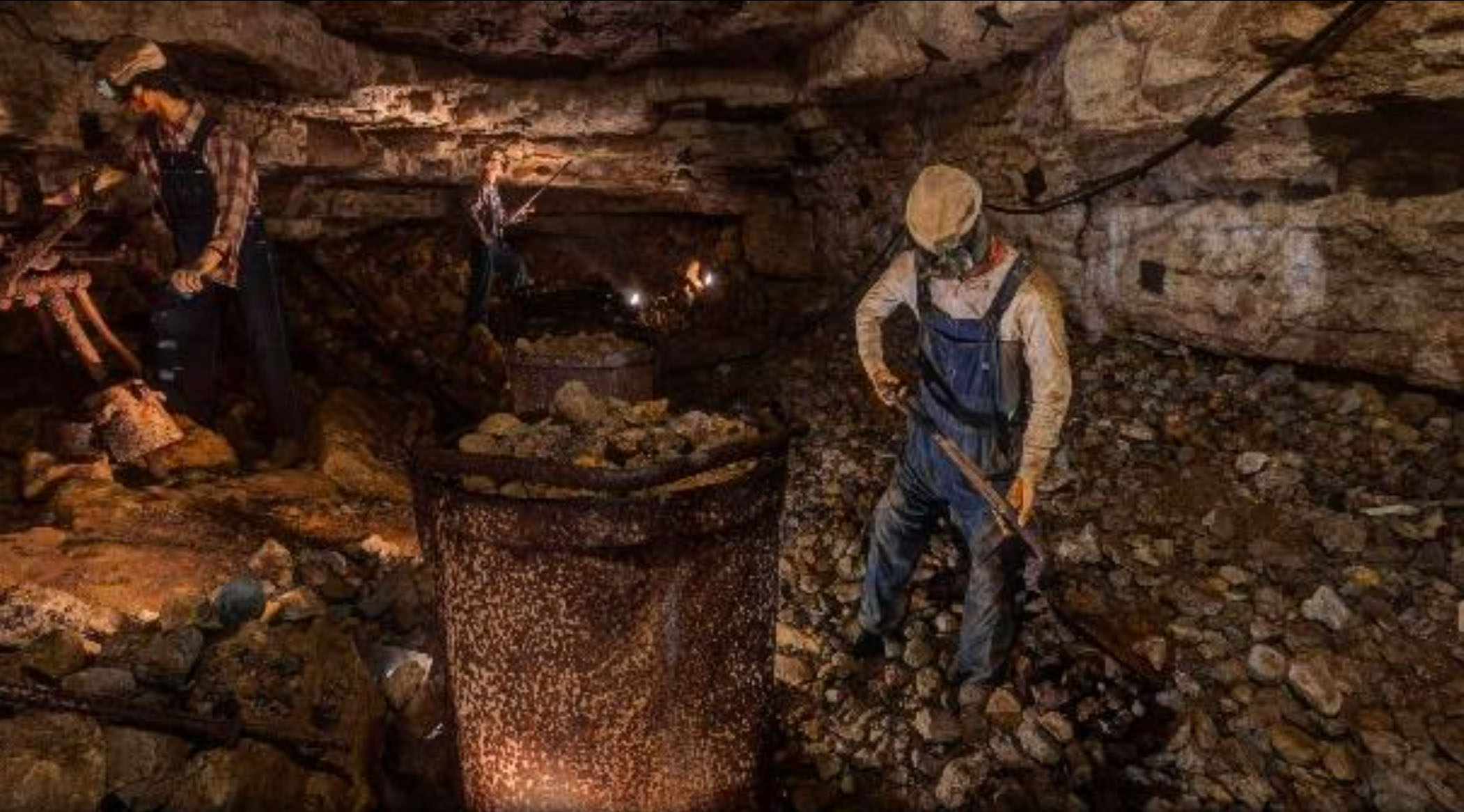
Realistic mannequins depict the daily work activities of lead and zinc miners at the Bevans underground lead mine. Source: The Mining and Rollo Jamison Museums. |
Mining’s Continued Importance
The continued importance of mining to Platteville can be experienced at the Mining Museum. Opened in 1971, the Mining Museum educates the public on Platteville’s mining history. The museum has an exhibit space, where visitors can observe mining artifacts and learn about the people who worked in the mines. Notably, visitors can enter the Bevans lead mine: an excavated former lead mine from the 1840s. Visitors become immersed in mining history as the cool, dark environment and limestone walls give a sense of what miners experienced at work. |
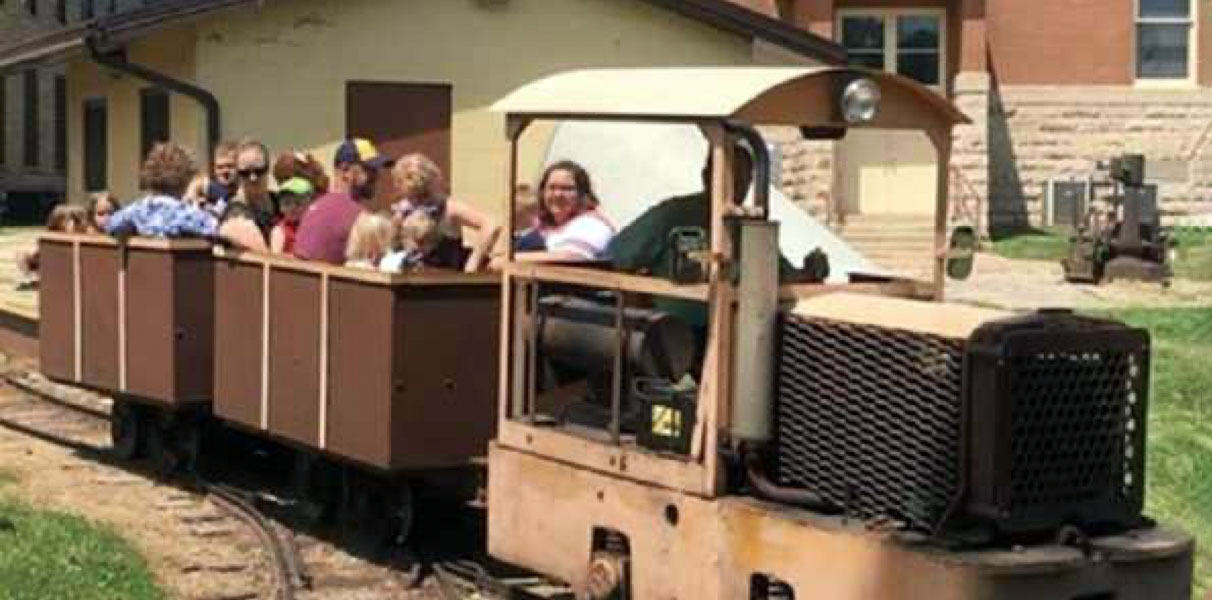
Visitors take a tour of the museum grounds, including the "hoist house". |
This video shows drone footage of the Mining Museum in Platteville, including the Bevans mine, railroad, and hoist house. (1 min 55 sec.) |
This video gives an in-depth tour of the Bevans mine at the Mining Museum in Platteville, and the tour guide details the importance of zinc mining after the original lead boom. (6 min 44 sec). |
Timeline
|
Why I choose this object?
|

Liam Reinicke
contact
History 401 [Spring 2022]
Leslie A. Bellais
contact

